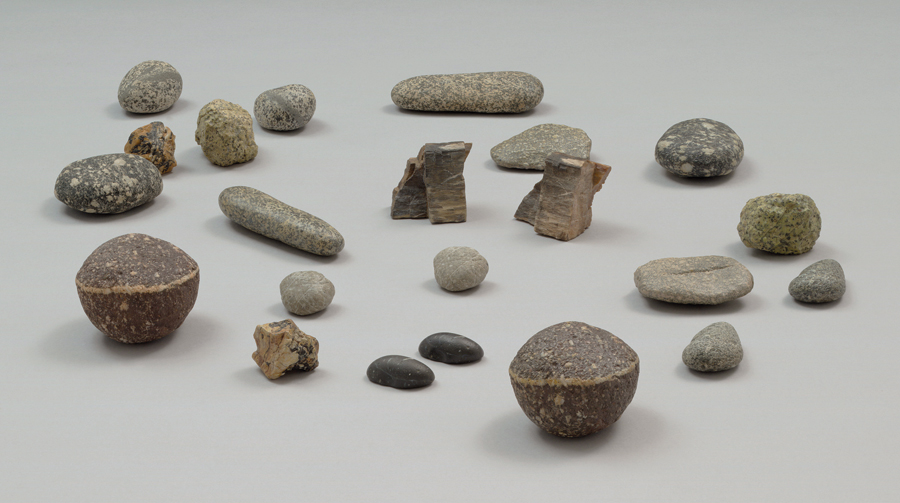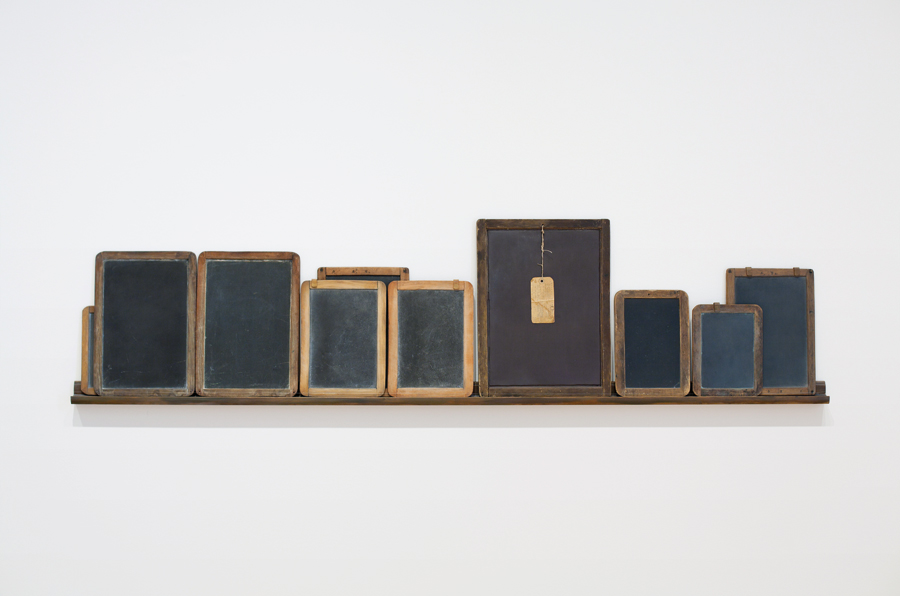Artist Vija Celmins ‘Stands at the Lip of the Abyss’
Her retrospective at the Met is a five-decade meditation on the vastness of the cosmos and the insignificance of human life
Her retrospective at the Met is a five-decade meditation on the vastness of the cosmos and the insignificance of human life

The best minimalist art suggests the landscape after a great fire: it inspires a deep interest in what’s left. It shows us that, despite its spareness or severity, it is still a long way from silence.
Trying to get to that unkillable core in my own writing, trying to capture pure states of being, I remove the decorative and trivial marks, scour away almost all of the words I begin with. I want to bear witness to what’s left when there is almost nothing left; to tell a story by describing the negative space around it.
Having spent her career gradually and methodically erasing meaning from her art, Vija Celmins has developed an intimacy with the great sterilities of the physical universe. The shared human insignificance, the shared living moment set against a background rigorously scrubbed of human reference, is what she gets us to.
In a 2007 interview with Simon Grant, Celmins said: ‘When I was a student, we were all interested in abstract expressionism. We wanted to do big, great paintings. However, later on, when I was living on the West Coast, I dropped it and started making paintings that were based on what I could see. I tried to forget what was in my mind; I had been thinking too much about the work and inventing too much, and it seemed to mean nothing.’1

Politics, philosophy, ideas: those were the first things she got rid of. There would be further abandonments.
Celmins’s early works, made while she was still a graduate student at UCLA, use colour – blue for the flap of Envelope, orange for the coil of Heater (both 1964) – and are painted directly from their source objects. By 1965, she had begun painting from newspaper clippings and restricting her palette to grey tones, her subjects to grey subjects: a rhinoceros, a locomotive, a truck, a pistol, clouds.
Was she reacting against the bleaching, blasting light outside her Venice Beach studio? The truck looks pinned onto the canvas; the rhino possesses the typical noble stillness of the large animal in art. (Patiently, the giant wears his paint, though I ought not to personify him; compositionally, he resembles the truck.) What’s consistent is a loyalty to grey.
While Celmins was working solely from photographs, her source materials were sometimes mediated doubly, triply. Images were transmitted by a satellite, printed and clipped from newspapers, then photographed, then painted. She was not painting the sky; she was making a painting in which an image of the sky remained as an obscure relic, multiply removed.
In 1966, she turned to clippings of fighter jets. The planes, the same size as the rhino and the truck, hover in the foreground, surrounded by grey that isn’t quite sky. The paintings preserve the newspapers’ printing errors and other artefacts as dots and lines and smudges, which defangs and distracts from the horrors of war. In a 1991 interview with Chuck Close, Celmins drew a connection between these planes and her childhood in Latvia during World War II2, but society and history aren’t her subjects: she is interested in showing us something beyond the human world.

Then, in 1968, at the very moment the personal became political, Celmins switched from grey paint on canvas to graphite on paper and started to render the meticulous oceans for which she is best known. Still in Venice, now closer to the beach in a new studio, she drew without touching the paper with her hand, gridding her source photographs and working from the lower right to the upper left. Never using an eraser, always maintaining this purity of process, she left her paper immaculate, almost unmarked by evidence of human intention.
The ocean is pure energy, pure movement, but depicting movement isn’t central to these pictures. Celmins wasn’t interested in depictions, nor was she interested in beauty. She was interested in forms so large that you don’t have to think about them, you just have to believe in them.
In a 2003 interview with Susan Sollins, Celmins said: ‘In my quest for clarity, I decided that I was going to do everything with just a pencil. You call them drawings; I don’t even call them drawings […] I don’t even call them things. They are like areas that are made – concentrated on – thoroughly considered.’3
Ocean Steps (1973) places her subject at an even greater remove: the work consists of seven drawings of the same source photo, each one in a different graphite hardness from 8H to 3B. By the 1970s, she’d also begun to mark some of her ocean drawings with a thin white ‘X’, running corner to corner, just visible enough to remind the viewer that, while the ocean isn’t the subject of a foreground, it isn’t just a background, either. It’s not even an ocean anymore, but the source material for a drawing. She is making objects, not pictures of objects.
To Fix the Image in Memory I–XI (1977–82), which lends its name to Celmins’s current retrospective at the Art Gallery of Ontario in Toronto, is one of her few sculptural works. The piece includes 11 stones and 11 bronze-and-acrylic reproductions of those stones scattered on a white platform. With this cluster, Celmins gets very close, closer than in her paintings and drawings, to making human effort practically invisible.

More representative of her output are the deserts drawn from her own source photographs, which were taken in Arizona and New Mexico during and after the ocean pieces. (A child will remind you that oceans and deserts are the same thing, really; the desert is where the water used to be.)
In the 1980s, Celmins moved to New York and began to work from photos of the night sky, layering and sanding black paint to create depth. At the San Francisco Museum of Modern Art, where ‘To Fix the Image in Memory’ was first presented, a final gallery was covered by a skylight-studded ceiling, light suffusing the space, as if to show us what Celmins has been up against, armed with graphites and greys. In some of the paintings, there’s a hint of blue or umber in the pinpoints of starlight, which are actually tiny drops of liquid rubber, sanded and layered alongside 20 or more strata of surrounding paint.
The word ‘timeless’ is taken to mean ‘eternal’, but Celmins isn’t chasing timelessness, exactly; she’s documenting the effect of the violent interaction of her subjects – an ocean, a desert, a sky – with geological, astronomical time, against which human life is almost invisibly minute.
She is interested in what things look like when the human element is gone. Perhaps the work expresses a wish to disappear or to be considered apart from the biography of its maker. Or it expresses a wish for intimacy with something unknowable – whether because it’s too vast or too far away or too formless.

An artist is asked to provide narratives all the time. Why this instead of that; why now instead of earlier or later; what changed and why, always why. But an artist’s career doesn’t consist of acts and their inevitable consequences. It’s just thing after thing, work after work. I don’t believe that Celmins had to start with discrete subjects – planes, guns, a rhinoceros – in order to get to the ocean drawings. I don’t believe that her one experiment with panelled work must be viewed after her non-panelled work. I don’t want to be told that an artist is always looking to make something bigger or better, or searching for a means to repudiate
everything she’s done so that she can begin again as an amateur. What I do want to see is what remains the same, despite the necessities of maintaining a dynamic career.
For the full extent of her career, Celmins has worked toward expelling distractions and retaining as little as possible in order to express what can be expressed. She clings to no distraction, no decoration, no bankrupt aesthetic or formal convention. In her spare, quiet, severe works, I see compulsive attention, deep curiosity and an abiding interest in physical infinities.
Subdued, redacted, subtextual, tacit, constrained art invites us to ascribe to or project onto or read into or imagine during whatever text or artefact is already there. Constrained art is variously described as arrogant and timid, wise and lazy, efficient and grandiose. Constrained art is often taken as a gesture toward wanting some reductive, all-purpose truth, but we mustn’t automatically project an imagined eloquence onto it, either.

Celmins allows us, as witnesses, to jettison much of what we’re supposed to think about when we look at art: the biography and psychology of the artist; the concept and meaning expressed by the art. She began with lamps and toasters; continued with guns and planes; and then got to oceans, deserts, clouds, the moon, the sky, the stars. She now stands at the lip of the abyss, her ultimate subject the great sterility that outlasts all life. But there is something more to Celmins than her processes of restriction. There is a furious fullness about it, despite the general emptiness. That fullness is the promise that one can look into the abyss and live.
After 2000, Celmins renewed her interest in objects. She collected children’s school slates and had facsimiles fabricated. She exhibits the real and the facsimile side by side, having scratched up the imitation to match the original and, in so doing, reminds us that a blank slate is not blank but as littered as the night sky. These works are iterations of deep space in solid objects. In a 2010 interview with The Brooklyn Rail, she neatly lists the media of these not-quite-blank slates: ‘school kids and time’.4
Sometimes I wonder if I’ve been too vehemently tidy in my own writing, if in trying to get rid of the chaos, to block intrusion by non-deliberate things, I’ve sent them all away forever, and if my affinity toward silence has finally made everything go away for good. But, when I look at the apotheoses of Celmins’s work, I see an artist developing a means of dealing with silence. It consoles me that, even then, after eliminating so much from her process, art-making is still possible and necessary – that, after all of the oceans and deserts and skies, she’s drawing again, using eraser on charcoal, applied with her hands, making images of deep, almost empty space.
Up close, as she describes them, the drawings, like all art and all life and the infinite sky itself, are ‘just dust’.
Vija Celmins is an artist based in New York, USA. Her retrospective ‘To Fix the Image in Memory’ was on view at the San Francisco Museum of Modern Art, USA, from December 2018 to March 2019. It is on view at Art Gallery of Ontario, Toronto, Canada, until 5 August and will open at The Met Breuer, New York, in September.
This article first appeared in frieze issue 203 with the headline ‘Where the Water Used to Be’
Main image: Untitled (Ocean), 1977, graphite on acrylic ground on paper, 25 × 33 cm. Courtesy: the artist and Matthew Marks Gallery, New York/ Los Angeles © Vija Celmins
1 'Thinking Drawing', Tate Etc., issue 9, Spring 2007, https://bit.ly/2v4mS2V, accessed 26.02.19
2 'Vija Celmins Interviewed by Chuck Close', 1991, in William S. Bartman, ed., Vija Celmins, 1992, A.R.T. Press, New York, p. 20
3 Susan Sollins, Art: 21: Art in the Twenty-First Century, season 2, 2003, https://bit.ly/20szTRf, accessed 26.02.19
4 'Vija Celmins with Phong Bui', The Brooklyn Rail, June 2010, https://bit.ly/2HTA0nD, accessed 26.02.19























